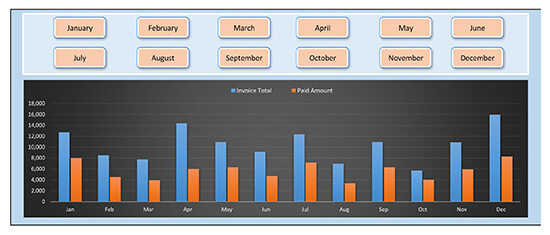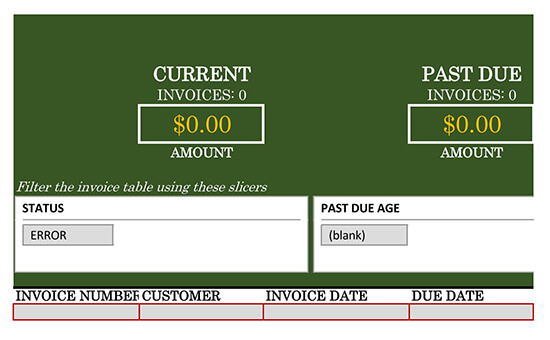Keeping track of your billing is an important task when running any company. Having an efficient system allows you to be paid on time and alerts you to bills that need to be followed upon.
The best way to do this is by using an Invoice Tracker Template.
An invoice is a document that is used for billing purposes. It contains detailed and itemized descriptions of all services and goods that have been provided to a customer by a business.
Invoices are required for accounting purposes, keeping track of your sales and inventory, and keeping track of any bills owed.
To get a better idea of what an Invoice Tracker should look like, you can download one of our free templates or samples.
What is an Invoice Tracker Template?
All businesses need a way to track their invoices, with many using software programs to do so. Not all software offers the customization needed for companies who need several types of invoices though, and software can be expensive. You also have to go through the process of learning and training others on how to use it. Some businesses still rely on physical paperwork and invoice books that need to be filed and which take up space.
An easier way to keep track of your invoices is by using an invoice tracker template. It’s as simple as downloading the template and customizing it the way you need to. Whether it’s sales invoicing or supply invoicing, you can easily use invoice tracker templates to keep on top of your billing and invoicing needs. Most invoice tracker templates are compatible with popular platforms, such as Microsoft Word and Excel.
What an invoice tracker template should contain ?
As mentioned earlier, invoices will differ depending on what a company needs. A good invoice tracker template should have these basic fields:
- Invoice date
- Invoice number
- Customer’s name
- Invoice due date
- Amount due
- Total amount paid
- Oustanding amount
- Status
How to Create an Invoice Tracker
The best way to create an invoice tracker is by using an Excel-compatible spreadsheet template. This will let you filter your invoicing in a variety of ways.
Invoice number
You should begin by using an invoice number. How you format your invoicing numbers is up to you. Most use a set number of digits and will begin by placing a few zeros first, for example, “00001”. This then increases with each invoice created.
Customer Details
You should next enter the details of the customer. This can be as simple as the customer’s name or a specific customer number for repeat clients.
Invoice Date
Next should be the date that you are creating your invoice. While you may have other dates, such as when the service or product was ordered, it’s important to use a separate date for invoice billing.
Due Date
You should also include the date that the payment is due. It’s best to give an actual date rather than saying “due in 14 days” to avoid confusion and late payments.
Invoice Amount
The invoice amount should include the overall total, which includes any fees or taxes.
Amount Paid
Whether you take partial invoice payments or not, you should still track how much was paid by the customer in your invoice. This will keep you from having to make template changes later on if you do take a partial payment.
Amount Outstanding
The outstanding amount can be different from the overall invoice total, especially if a customer made a partial payment upfront or you are charging fees for late payments.
Status
This is simply listed as past due or closed and is helpful when you want to filter accounts to see bills that have not yet been paid in full.
Free Templates
Customizing Your Invoice Tracker
Templates will give you the freedom to add and remove things on your invoice tracker that you want. Aside from the basic fields, we have gone over, you may want to add other customization fields, such as:
- Who made the sale for employee commission
- Additional customer details, such as contact information
- Point of contact if you deal with larger businesses
- Reminder for recording the date that the original invoice was sent
- Late fees
- How past due an invoice is
Bottom Line
Invoices can be as simple or detailed as you require, however, they need to contain key elements; buyer and seller contact information, payment terms, descriptions of all services and goods provided, invoice and payment dates, and signatures. While using a ledger allows you to track invoices by chronological order, Invoice tracker templates also allow you to filter your invoices by date, customer, and status in order to make it easier for you to keep track of. Using an invoice tracker template is a cost-effective and easy way to manage your billing.

